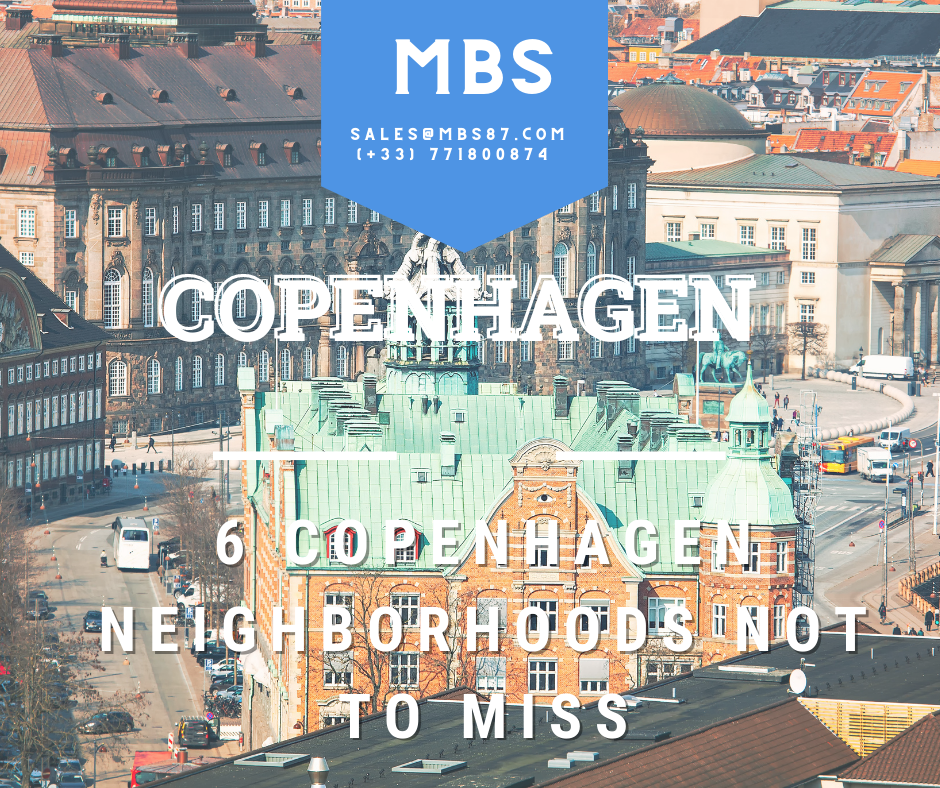Photo by Robin Skjoldborg
Nørrebro is home to excellent cafés, including Red Roses Kaffebar.

A former brewery campus turned hipster hangout. A posh dining paradise. These are the districts to explore for the real Copenhagen experience.
The connection between Copenhagen, or København, and the sea is built right into its name—in Danish, København translates as “the merchants’ harbor”—and helps explain why so many of its neighborhoods end in “bro.” The word means “bridge,” and when the city began expanding out of its medieval center in the mid-19th century, it had to construct bridges to connect the newly incorporated areas.
Each of the three main “bridge” neighborhoods—Vesterbro, Nørrebro, and Østerbro—has a distinctive personality but within each are micro-neighborhoods that have their own character as well. As the city expands, they’re being joined by exciting new districts, too.
Here are the six best neighborhoods in Copenhagen to explore for a truly local experience.
The inner city—which includes part of the medieval center—is Copenhagen’s most picturesque. Home to most of the city’s historic sites, from Christiansborg (the parliament building made internationally famous by Borgen) to the candy-colored houses of Nyhavn, Indre By is also the most touristy part of Copenhagen, with the shopping street (Strøget) and bar street (Gothersgade) to show for it. But some corners still feel like real neighborhoods, the kind, in fact,that make you want to live there.
A case in point is the area around St. Paul’s Church. Bordered by two leafy parks—Kongens Have and Kastellet—the streets in between are lined with old townhouses, some of which, in the ochre-tinted area known as Nyboder, used to function as housing for military families. Artisan studios like Hanne Bertelsen Ceramics, as well as cafés like Apotek 57, restaurants like Fabro, and bars like Black Swan (for craft beer) and Lille Blå (for wine), add to the charm, as do two museum gems: Davids Samling (or the David Collection) and the Museum of the Resistance.
When guest workers from Turkey started arriving in Copenhagen in the late 1960s, this area, just to the north of the lakes, is where they moved, and today, the neighborhood remains the city’s most ethnically diverse, with Middle Eastern grocery stores, Thai restaurants, and West African clothing stores. But its lower rents have also made it attractive to artists and students.
All of the area around the leafy Assistens cemetery is hipster central these days, but the artisanal bakeries (Benji, Mirabelle, Rondo, Collective), inexpensive wine and cocktail bars (Vivant, Barking Dog, Pompette, Paloma), monthly farmers’ market at Guldbergs Plads, and park/artists installation Superkilen make the strip just east of the Nørrebrogade street an intriguing path to follow.
A posher neighborhood populated by diplomats and upper-class families, Østerbro, which lies to the east of Indre By, is home to gourmet delis, chic children’s clothing stores, and the city’s soccer stadium (topped by a restaurant with three Michelin stars, no less).
This part of the city, once the home of the Carlsberg brewery campus, feels like no other—in Copenhagen or elsewhere. The whimsical architecture. Which includes a lighthouse, an ornately mosaiced clocktower, and four massive granite elephants standing guard over the gateway to the campus. Was born of the company founder’s insistence that even an industrial brewery could be beautiful.
Today, it’s also proving an industrial brewery can become a cool neighborhood. The beer-related museum is undergoing renovation, and the old boiler house will soon be transformed into an important center for dance and choreography. In the meantime, there’s already some of Copenhagen’s best pizza (Surt) and burgers (Gasoline Grill). As well as the trendy Hotel Ottilia located in what was once the brewery’s malting room and, next door, a thermal bath spa, Aire.
Once known as “Sh*t Island,” because it was where Copenhageners’ sewage was dumped. Amager has, much to everyone’s amazement, become a desirable place to live. (That’s especially true for students on tight budgets, and young families looking for houses with gardens, without having to move to the suburbs.)
Linked to Amager by the Brygge Bridge, the neighborhood immediately west of the center was once the grim. Working-class district described so depressingly in poet Tove Ditlevsen’s memoirs. Today, it thrums with independent clothing shops and happening nightlife. Even while its bodegas (the Danish version of a dive bar) and sex workers do their part to keep the area real. Kødbyen, the former meatpacking district, gets all the love for its transformation into a hub for food, drink, culture, and a good time.
But the area around the recently renovated Enghaves Plads is just as much fun, with a skateboard park. Excellent bites at the South American Gorda, the Italian Bar La Una, and the ice cream-and-bakery Bageriet Brød. And vega the city’s most iconic music venue for rock, indie, and the occasional Danish rapper. On warm summer nights the whole square turns into an open-air party.
See more : 3 Benefits of renting a minibus in Europe
- Secure the best prices for high-quality car rentals across Europe! For exceptional value and service, please visit us at https://mbs87.com/pages/get-in-touch
- Stay updated with valuable travel tips and insights by following us at this link:https://mbs87.com or our social page: https://www.facebook.com/MBS87BusrentalserviceEurope
- Your journey to discovering Europe in comfort and style begins with just one click
